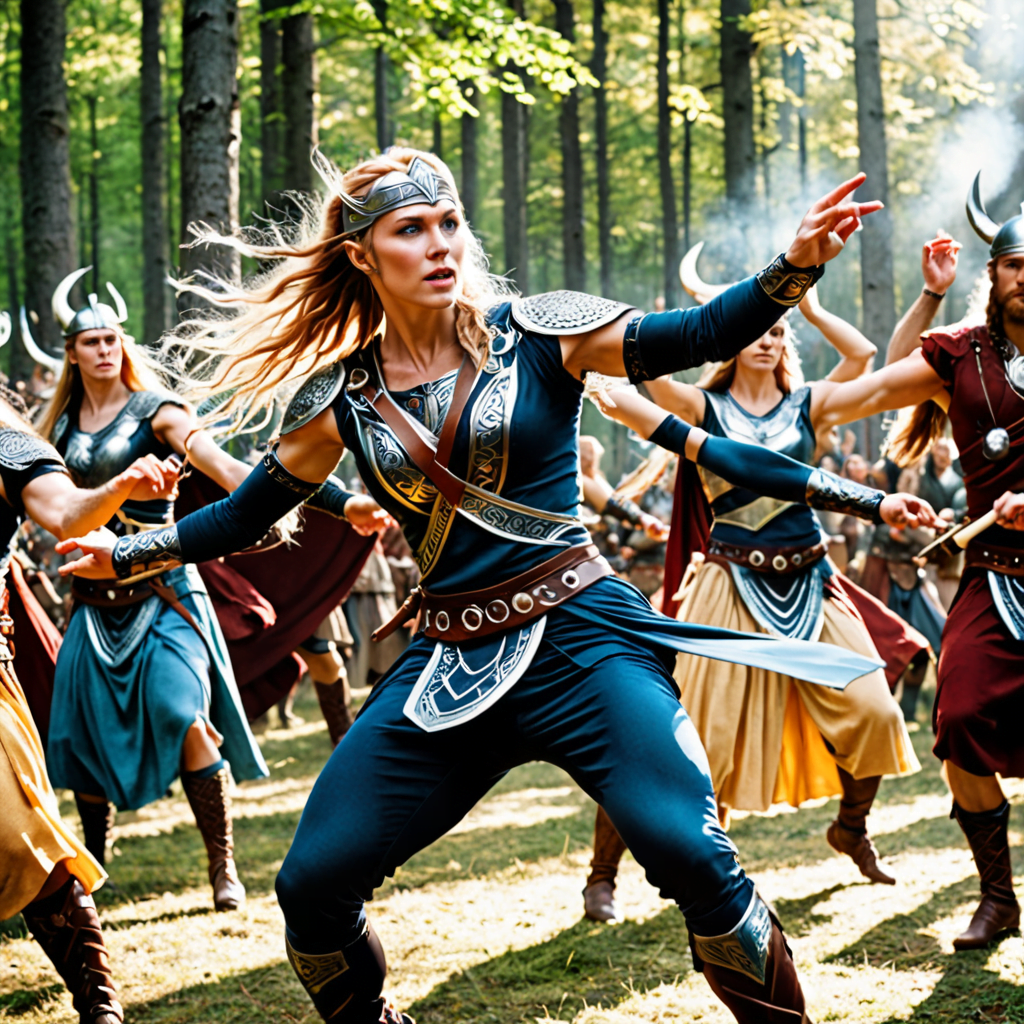The Influence of Norse Mythology on Norse Music and Dance
Norse mythology, rich with tales of gods, giants, and cosmic battles, has deeply influenced various aspects of Norse culture. One such area that bears the profound imprint of Norse mythology is music and dance. Let’s delve into how the ancient myths of the Norse people have shaped their musical and dance traditions.
The Magical Connection Between Norse Mythology and Music
In Norse mythology, music was considered a powerful force capable of invoking both joy and sorrow, as well as influencing the divine and mortal realms. The god of poetry and music, Bragi, was highly revered among the Norse pantheon, symbolizing the essential role of music in their culture. Instruments like the lyre, horn, and drum were commonly used in Norse music, with each having its own symbolic meanings derived from the myths.
Dancing to the Rhythms of Norse Myth
Dance, like music, played a significant role in Norse society, often associated with important events, feasts, and religious ceremonies. Norse dances were not merely for entertainment but also served as acts of worship, storytelling, and communal bonding. The legendary stories of gods, heroes, and creatures from Norse mythology were often reenacted through intricate dance performances, connecting the dancers and their audience with the mythical past.
Incorporating Mythological Themes in Modern Music and Dance
Today, the influence of Norse mythology can still be seen in various forms of music and dance, ranging from traditional folk songs to modern compositions that draw inspiration from ancient sagas and legends. Dance performances often take cues from Norse myths, incorporating symbolism, gestures, and choreography that pay homage to the rich storytelling tradition of the Vikings.
The Eternal Echoes of Norse Mythology in Music and Dance
With its haunting melodies and captivating rhythms, Norse music continues to echo the ancient tales of gods and heroes, keeping alive the cultural heritage passed down through generations. Similarly, Norse-inspired dances carry on the tradition of storytelling through movement, ensuring that the mythical world of Odin, Thor, and Loki remains vibrantly alive in the hearts of artists and audiences alike.
Frequently Asked Questions about the Influence of Norse Mythology on Norse Music and Dance
What is the significance of Norse mythology in Norse music and dance?
Norse mythology plays a crucial role in inspiring the themes, melodies, and rhythms of traditional Norse music and dance. The stories of gods, heroes, and monsters are often reflected in the lyrics and movements, creating a strong cultural connection.
How do Norse myths influence the lyrics of Norse music?
Norse myths provide rich storytelling elements that are incorporated into the lyrics of Norse music. Themes of valor, honor, battles, and nature from the mythology are often depicted in the songs, adding depth and meaning to the music.
Can you give examples of Norse mythological themes in traditional Norse dances?
Traditional Norse dances often depict stories or themes from Norse mythology through symbolic movements. For instance, dances representing the struggle between gods and giants, or the cycle of life and death, are common in Norse dance traditions.
How has modern music and dance incorporated Norse mythology?
Modern music genres, such as folk metal or neofolk, often draw inspiration from Norse mythology in their lyrics and melodies. Similarly, contemporary dance performances may use Norse mythological themes to create innovative choreographies that pay homage to ancient legends.




